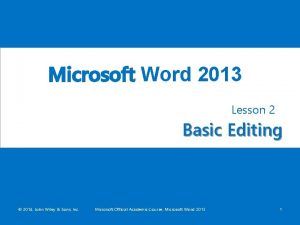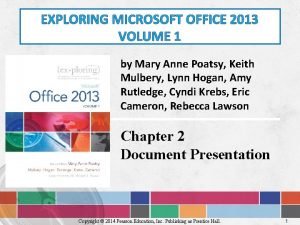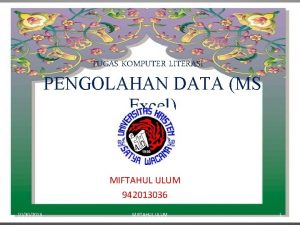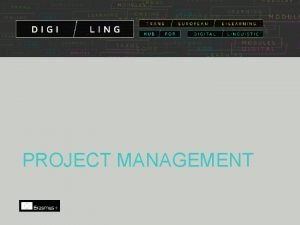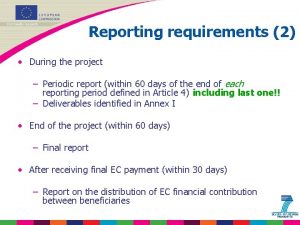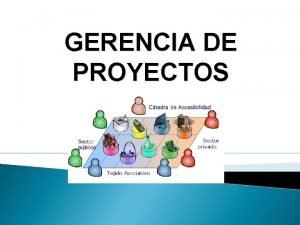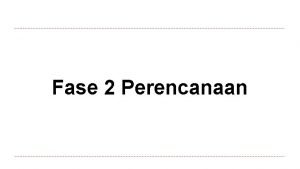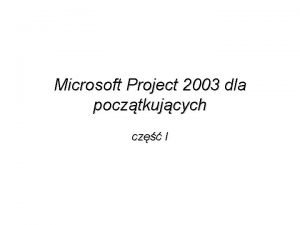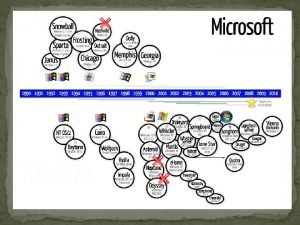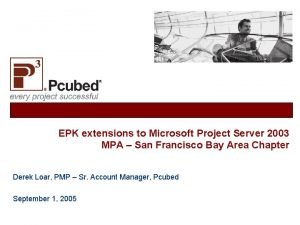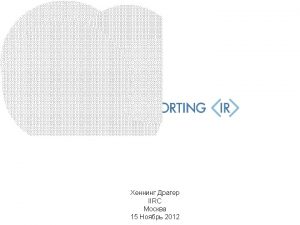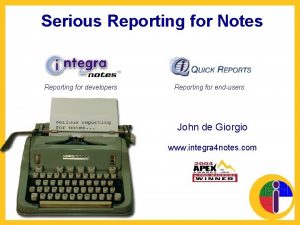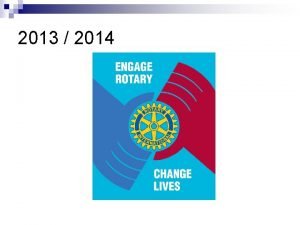Microsoft Project 2013 Lesson 10 Project Reporting 2014



















































- Slides: 51

Microsoft Project 2013 Lesson 10 Project Reporting © 2014, John Wiley & Sons, Inc. Microsoft Official Academic Course, Microsoft Project 2013 1

Objectives © 2014, John Wiley & Sons, Inc. Microsoft Official Academic Course, Microsoft Project 2013 2

Software Orientation • The new Report Ribbon makes locating and selecting a report easier than ever before. With predefined dashboard reports, the user can show an overview of the project, project burndown, cost overview, work overview and many more. © 2014, John Wiley & Sons, Inc. Microsoft Official Academic Course, Microsoft Project 2013 3

Software Orientation • The Project Overview Dashboard provides the basic information need to present project performance to date, which tasks are late, which milestones are coming dues and an overall percent complete. © 2014, John Wiley & Sons, Inc. Microsoft Official Academic Course, Microsoft Project 2013 4

Activate and Print a Dashboard Report • Using a Dashboard report you can quickly see all of the major information about your project then print the information on paper. © 2014, John Wiley & Sons, Inc. Microsoft Official Academic Course, Microsoft Project 2013 5

Step by Step: Select and Print a Dashboard Report GET READY. Before you begin these steps, launch Microsoft Project 2013. 1. OPEN the Don Funk Music Video 10 M project schedule. 2. SAVE the file as Don Funk Music Video 10. 3. On the ribbon, click the Project tab. In the Status group click the calendar icon in the Status Date field. Microsoft Project displays the Status Date dialog box. 4. In the Select Date: field type or select 6/10/16. Your screen should look like the figure at right. © 2014, John Wiley & Sons, Inc. Microsoft Official Academic Course, Microsoft Project 2013 6

Step by Step: Select and Print a Dashboard Report 5. Click OK or press Enter to close the Status Date dialog box. You set the Status Date to tell Microsoft Project you want information as of this date. 6. On the ribbon, click the Report tab and then select the Dashboards button. From the dropdown menu that appears, select Project Overview. Your screen should look similar to the figure above. © 2014, John Wiley & Sons, Inc. Microsoft Official Academic Course, Microsoft Project 2013 7

Step by Step: Select and Print a Dashboard Report 7. On the ribbon, click the File tab and then select Print from the navigation bar on the left side of the screen. Your screen should look similar to the figure at right. You may notice that some of the report is cut |off at the right side of the print preview area. © 2014, John Wiley & Sons, Inc. Microsoft Official Academic Course, Microsoft Project 2013 8

Step by Step: Select and Print a Dashboard Report 8. At the lower right of the Settings section, click the Page Setup hyperlink. Microsoft Project displays the Page Setup dialog box. 9. On the Page tab, in the Scaling section, click Fit to: and choose 1 against the pages wide by and tall boxes. Your dialog box should look like the figure at right. © 2014, John Wiley & Sons, Inc. Microsoft Official Academic Course, Microsoft Project 2013 9

Step by Step: Select and Print a Dashboard Report 10. Now select the Margins tab. Set all margins to 0. 5 inches. Click the OK to close the dialog box. Your screen should now look like the figure below. 11. SAVE the project schedule. • PAUSE. LEAVE Project open to use in the next exercise. © 2014, John Wiley & Sons, Inc. Microsoft Official Academic Course, Microsoft Project 2013 10

Step by Step: Select and Print a Dashboard Report • A report is anything the project manager uses to transmit information about the project. Most all reports are done in writing, using both words and graphics. Some reports are made available through dashboards. • A dashboard is a generic term used to mean an easy to read, single page interface (usually centrally located–such as a Share. Point web page) that senior management can quickly view to obtain a high-level view of current project status. © 2014, John Wiley & Sons, Inc. Microsoft Official Academic Course, Microsoft Project 2013 11

Customize and Print a Report • Using the new options of the reports feature in Microsoft Project 2013 allows you to fully customize the information you wish to include in the report. © 2014, John Wiley & Sons, Inc. Microsoft Official Academic Course, Microsoft Project 2013 12

Step by Step: Create, Customize and Print a Report • GET READY. USE the project schedule you created in the previous exercise. 1. Click the Report tab. On the ribbon, click the New Report button. 2. On the dropdown menu that appears, click Table. 3. In the Report Name box that appears, name the new report Remaining Work Report and then click OK. Your screen should look like the figure above. © 2014, John Wiley & Sons, Inc. Microsoft Official Academic Course, Microsoft Project 2013 13

Step by Step: Create, Customize and Print a Report 4. At the top of the field list at the right of the screen, click Resources. 5. Using the scroll box at the right of the field list box, navigate down until the Work fields are visible and then select the expand button next to Work. 6. Select the check box next to Remaining Work. 7. In the Filter box, select Resources: Work. 8. In the Sort by box, select Name. © 2014, John Wiley & Sons, Inc. Microsoft Official Academic Course, Microsoft Project 2013 14

Step by Step: Create, Customize and Print a Report 9. Auto fit the name and Remaining Work columns (make them wider so all information fits on one line) and then center the entire table on the screen under the report name. 10. Click the File tab and then select Print. You will note that the report may not be centered on the page. This is because the previous report was on Landscape orientation. 11. In the settings section, change the orientation to Portrait. 12. Click the return arrow at the top. © 2014, John Wiley & Sons, Inc. Microsoft Official Academic Course, Microsoft Project 2013 15

Step by Step: Create, Customize and Print a Report 13. Click the minus sign on the zoom slider at the lower right portion of the screen two or three times. Manually move the table and the report name box to the center of the page. You will note page breaks are indicated by the dashed lines.

Step by Step: Create, Customize and Print a Report 14. Click the File tab and then select Print. You will note that the report is now centered on the page. 15. SAVE the project schedule. • PAUSE. LEAVE Project open to use in the next exercise. • Printing information from a project schedule to share with stakeholders is a common activity for project managers. • Stakeholders are the people or organizations that might be affected by project activities and can range from resources working on the project to customers receiving the project deliverables. © 2014, John Wiley & Sons, Inc. Microsoft Official Academic Course, Microsoft Project 2013 17

Reporting Project Status • Microsoft Project provides many different ways to report a project’s status in terms of budget or variance. • A key part of a project manager’s job is knowing which stakeholders need to see which details in which format. © 2014, John Wiley & Sons, Inc. Microsoft Official Academic Course, Microsoft Project 2013 18

Step by Step: Report Project Variance with a “Stoplight” View • USE the project schedule you created in the previous exercise. 1. Click the View tab, then in the Task views group, select Other Views then select More Views. In the list select Task Sheet and then click Apply. Microsoft Project displays the Task Sheet view. 2. Select the Tables button and then click Cost. 3. Click on the Project tab, and then click the Custom Fields button. The Custom Fields dialog box appears. 4. Under the Field label at the top of the dialog box, make sure that Task is selected. In the Type box, select Number from the dropdown list. © 2014, John Wiley & Sons, Inc. Microsoft Official Academic Course, Microsoft Project 2013 19

Step by Step: Report Project Variance with a “Stoplight” View 5. In the Field list, select Overbudget (Number 3). 6. Under the Custom attributes label, click the Formula button. The Formula dialog box is displayed. The formula shown in this dialog box has been pre-entered for accuracy and to save time. Your screen should look similar to the figure below. © 2014, John Wiley & Sons, Inc. Microsoft Official Academic Course, Microsoft Project 2013 20

Step by Step: Report Project Variance with a “Stoplight” View • The formula evaluates each task’s cost variance. • If the task is above 20 percent above baseline, the formula assigns the number 30 to the task; if it is between 20 percent and 10 and percent, a 20; and if below 10 percent, a 10. If the task does not fit within those criteria, such as the case with a milestone task which should have no costs, the formula returns a zero value. • Note: For the purposes of this project, a variance of 20 percent above baseline has been decided on by the project manager and sponsor as the maximum tolerance level. © 2014, John Wiley & Sons, Inc. Microsoft Official Academic Course, Microsoft Project 2013 21

Step by Step: Report Project Variance with a “Stoplight” View 7. Click Cancel to close the Formula dialog box. 8. In the Custom Fields dialog box, under the Values to display label, click the Graphical Indicators button. The Graphical Indicators dialog box appears. This dialog box enables you to specify a unique graphical indicator to display, depending on the value of a field for each task. In this usage, the values returned from the formula in the figure on slide 20 are used to assign the graphical indicator. To save time, the indicators have already been selected. © 2014, John Wiley & Sons, Inc. Microsoft Official Academic Course, Microsoft Project 2013 22

Step by Step: Report Project Variance with a “Stoplight” View 9. Click the first cell under the Image column heading, and then click the downarrow. Here you can see the many graphical indicators you can associate with the values of fields. 10. Click Cancel twice to close the Graphical Indicators dialog box, and then click Cancel again to close the Custom Fields dialog box. 11. Right-click the Fixed Cost column heading. Select Insert Column from the list. 12. From the keyboard, start typing the word “Over”. • Notice how Project narrows the list down as you type. You can also navigate using the scroll bar to Overbudget (Number 3). © 2014, John Wiley & Sons, Inc. Microsoft Official Academic Course, Microsoft Project 2013 23

Step by Step: Report Project Variance with a “Stoplight” View • Microsoft Project displays the Overbudget column in the Cost table. Your screen should look similar to the figure below.

Step by Step: Report Project Variance with a “Stoplight” View • The custom field Overbudget (Number 3) displays a graphical indicator that represents one of three different levels of cost variance. • The graphical indicators will change, according to the ranges specified in the formula, as each task’s cost variance changes. This is a useful format for identifying tasks whose cost variance is higher than you would like (as indicated by the red and yellow indicators). • This makes it easy for any stakeholder to quickly scan the task list and locate tasks that need further attention. 13. SAVE the project schedule. • PAUSE. LEAVE Project open to use in the next exercise. © 2014, John Wiley & Sons, Inc. Microsoft Official Academic Course, Microsoft Project 2013 25

Step by Step: Report Project Variance with a “Stoplight” View • In this exercise, you used a custom field with a custom formula to create a custom stoplight report. • As a project manager, you will find many ways to present the current status of your project. Bear in mind the audience of the report. For example, you will want to present high level information to upper management. Conversely, you will want to give detailed information to the project team. © 2014, John Wiley & Sons, Inc. Microsoft Official Academic Course, Microsoft Project 2013 26

Using Visual Reports • The Visual Reports feature of Microsoft Project 2013 combines the power of Microsoft Excel and Microsoft Visio with the data of your project to create high impact, visually centered reports. • You can use a preformatted report, edit a report or create a new report that includes a specific set of fields from Microsoft Project. © 2014, John Wiley & Sons, Inc. Microsoft Official Academic Course, Microsoft Project 2013 27

Step by Step: Create a Visual Report • USE the project schedule you created in the previous exercise. 1. On the ribbon, click the Report tab, and then select the Visual Reports button. The Visual Reports–Create Report dialog box appears. Your screen should look like the figure at right. 2. Click the Task Usage tab, and then click Cash Flow Report. © 2014, John Wiley & Sons, Inc. Microsoft Official Academic Course, Microsoft Project 2013 28

Step by Step: Create a Visual Report 3. In the Select level of usage data to include in the report: box, select Months. 4. Click the View button. The Visual Report engine gathers data from your project file and builds an Online Analytical Processing (OLAP) cube. The application Microsoft Excel opens and the report is presented in Chart form from a preformatted report template. Your screen should look similar to the figure above. © 2014, John Wiley & Sons, Inc. Microsoft Official Academic Course, Microsoft Project 2013 29

Step by Step: Create a Visual Report 5. At the bottom of the Excel window, select the Task Usage sheet tab. 6. In the Pivot. Table Field List box, navigate to the Time field. Place your cursor on Monthly Calendar and drag it to the Rows box. Your screen should look similar to the figure at right. © 2014, John Wiley & Sons, Inc. Microsoft Official Academic Course, Microsoft Project 2013 30

Step by Step: Create a Visual Report 7. In the Pivot. Table area, click the expand button next to the year 2016, to reveal all the available time data. Your screen should look similar to the figure at right. © 2014, John Wiley & Sons, Inc. Microsoft Official Academic Course, Microsoft Project 2013 31

Step by Step: Create a Visual Report 8. Click the Chart 1 sheet tab at the bottom of the screen. Your screen should look similar to the figure at right. 9. Save the Excel visual report as Don Funk Cash Flow in your My Documents folder or another folder directed by your instructor. © 2014, John Wiley & Sons, Inc. Microsoft Official Academic Course, Microsoft Project 2013 32

Step by Step: Create a Visual Report 10. CLOSE Microsoft Excel. 11. CLOSE the Visual Reports Dialog box. 12. SAVE the project schedule. • PAUSE. LEAVE Project open to use in the next exercise. • In this exercise, you created a new visual report. • A visual report is a specific type of report that utilizes the combines the power of either Microsoft Excel or Microsoft Visio and the data which you have created in your project file. • The data is translated into pivot tables and graphs. You must have Microsoft Excel 2007 or newer to view the Excel reports with the Visual Reports feature. • You must have Microsoft Visio 2007 Professional or higher installed on your system to view the Visio reports. If this is not installed, the Visio reports will not be listed in the dialog box. © 2014, John Wiley & Sons, Inc. Microsoft Official Academic Course, Microsoft Project 2013 33

Customizing and Printing a View • Using a view, you can see your project schedule information on screen. • You can change what you see by customizing the view. • You can also apply these customized views to print the information on paper. © 2014, John Wiley & Sons, Inc. Microsoft Official Academic Course, Microsoft Project 2013 34

Step by Step: Customize and Print a Gantt Chart View • USE the project schedule you created in the previous exercise. 1. Click the View tab, then select the Gantt Chart button. 2. Click the File tab and then click Print. Microsoft Project displays print options on the left side and the Gantt Chart view in the right side, which is the Print Preview window. Your screen should look like the figure © 2014, John Wiley & Sons, Inc. Microsoft Official Academic Course, Microsoft Project 2013 35 above.

Step by Step: Customize and Print a Gantt Chart View 3. On the Print Preview toolbar, click the Page Right and/or Page Down button to display different pages. 4. On the Print Preview toolbar, click the Multiple Pages button. Most of the pages of the Gantt Chart appears in the Print Preview window. When the multiple pages Print Preview is active the printed output is displayed on separate sheets. You navigate using the scroll control at the bottom of the Print Preview pane. The Page Right, Page Left, Page Up, and Page Down buttons are inactive. The paper size displayed is determined by your printer settings. Your screen should look similar to the figure on the next slide. © 2014, John Wiley & Sons, Inc. Microsoft Official Academic Course, Microsoft Project 2013 36

Step by Step: Customize and Print a Gantt Chart View © 2014, John Wiley & Sons, Inc. Microsoft Official Academic Course, Microsoft Project 2013 37

Step by Step: Customize and Print a Gantt Chart View • The left side of the Print Preview Toolbar status bar should read “ 3 rows 3 columns. ” In the Print Preview window, this means there are three rows of pages by three columns of pages, for a total of nine pages. The status bar can help you quickly determine the total number of pages your printed view will be. 5. On the Print Preview toolbar, click the One Page button. The first page of the Gantt Chart is displayed. 6. Click the Page Setup hyperlink. The Page Setup dialog box appears. This is the same dialog box that would appear if you selected the Page Setup option on the File tab. 7. Click the Header tab. You want to add the company name to the header that prints on each page. © 2014, John Wiley & Sons, Inc. Microsoft Official Academic Course, Microsoft Project 2013 38

Step by Step: Customize and Print a Gantt Chart View 8. There are three Alignment tabs in the center section of the Header tab box. Select Center if it is not already selected. In the General box, click Company Name and then click the Add button next to the General box. Microsoft Project places the following code into the header: &[Company]. The software also displays a preview in the Preview window of the Page Setup dialog box. 9. Click the Legend tab. You want to change some of the content of the Gantt Chart view’s legend. 10. There are three Alignment tabs in the center of the Legend tab box. Click the Left tab. Currently, Microsoft Project is formatted to print the project title and current date on the left side of the legend. You also want to print the start date and duration on the right side of the legend. © 2014, John Wiley & Sons, Inc. Microsoft Official Academic Course, Microsoft Project 2013 39

Step by Step: Customize and Print a Gantt Chart View 12. Click the Right Alignment tab. Click the Right Alignment box, press Enter, and then type Start: followed by a space. 13. In the General box, select Project Start Date from the dropdown list. Click the Add button next to the General box. Microsoft Project adds the label and code for the project start date to the legend. 14. Press Enter to add a second line to the legend and then type Duration: followed by a space. 15. In the Project Fields box, select Scheduled Duration from the dropdown list. Click the Add button next to the Project Fields box. Microsoft Project adds the label and code for project duration to the legend. © 2014, John Wiley & Sons, Inc. Microsoft Official Academic Course, Microsoft Project 2013 40

Step by Step: Customize and Print a Gantt Chart View 16. In the Width box, type or use the scroll buttons to enter 3. This increases the width of the box that appears on the left side of the legend. Your screen should look similar to the figure above. © 2014, John Wiley & Sons, Inc. Microsoft Official Academic Course, Microsoft Project 2013 41

Step by Step: Customize and Print a Gantt Chart View 17. Click OK to close the Page Setup dialog box. Microsoft Project applies the custom changes to the legend. 18. Move your mouse cursor to the lower left corner of the page preview (your cursor appears as a magnifying glass). Click the lower left corner of the page. Microsoft Project zooms in to show the legend. Your screen should look similar to the figure on the next slide. © 2014, John Wiley & Sons, Inc. Microsoft Official Academic Course, Microsoft Project 2013 42

Step by Step: Customize and Print a Gantt Chart View © 2014, John Wiley & Sons, Inc. Microsoft Official Academic Course, Microsoft Project 2013 43

Step by Step: Customize and Print a Gantt Chart View The data you added to the legend will print on every page of the printed output. 19. Click the Task tab to return to the Gantt Chart view. Take note that although you did not print, your changes to the header and the legend will be saved when you save the project file. 20. SAVE the project schedule. • PAUSE. If you are continuing to the next lesson, keep Project open. If you are not continuing to additional lessons, CLOSE Project. © 2014, John Wiley & Sons, Inc. Microsoft Official Academic Course, Microsoft Project 2013 44

Step by Step: Customize and Print a Gantt Chart View • In a view, you can enter, read, edit, and print information. In a report, you can only print the information, you cannot change the data. Printing a view allows you to provide, on paper, almost everything you see on your screen. You can print any view you see in Microsoft Project, with just a few exceptions. • You cannot print form views (for instance, Task Form) or certain diagrams, such as the Relationship Diagram. • If you have two views displayed in a combination view (one view in the top pane and the other view in the bottom pane), only the view in the active pane will print. © 2014, John Wiley & Sons, Inc. Microsoft Official Academic Course, Microsoft Project 2013 45

Step by Step: Customize and Print a Gantt Chart View • In this lesson, you applied some custom formulas and graphical indicators to make it simple to review the status of tasks using the Task Sheet view. • Communicating the project status to stakeholders is one of the most important functions of a project manager and one that may occupy a significant portion of your working time. • It is imperative that the project manager know who needs to know the project status and why, as well as in what format and level of detail these people need the information. • The time to find the answers to these questions is in the initial planning stages of the project. © 2014, John Wiley & Sons, Inc. Microsoft Official Academic Course, Microsoft Project 2013 46

Step by Step: Customize and Print a Gantt Chart View • Once work on the project has commenced, your primary communication task will be reporting project status. This can take several forms: • Status reports describe where the project is in terms of scope, cost, and schedule. These are often referred to as the triple constraint, which is a popular model of project management. • Progress reports that provide the specific accomplishments of the project team. • Forecasts that predict future project performance. © 2014, John Wiley & Sons, Inc. Microsoft Official Academic Course, Microsoft Project 2013 47

Step by Step: Customize and Print a Gantt Chart View • Standard report formats may already exist if your organization is highly focused on projects and project management. If your organization does not have standard reports, you may be able to introduce project status formats that are based on clear communication and project management principles. You may be able to report project status using some of the following: • Printing the Project Overview dashboard report. • Copying Microsoft Project data to other applications. For example, you could copy the Calendar view to Microsoft Office Word or Microsoft Office Power. Point. • Saving Microsoft Project data in other formats, such as Excel, HTML or GIF. © 2014, John Wiley & Sons, Inc. Microsoft Official Academic Course, Microsoft Project 2013 48

Step by Step: Customize and Print a Gantt Chart View • It is important to keep in mind that the part of the project schedule you see on your screen is only a small part of the total project. For example, to print a six-month project with 75 tasks may require more than a dozen letter-sized pages. • In general, Gantt Charts and Network Diagrams can use significant amounts of paper on large projects. • Some experienced project managers who regularly use Microsoft Project print their projects on poster-sized paper using plotters (a type of printer that draws pictures or graphs using attached pens) or other specialized printing equipment. © 2014, John Wiley & Sons, Inc. Microsoft Official Academic Course, Microsoft Project 2013 49

Step by Step: Customize and Print a Gantt Chart View • Projects with several hundred tasks or long time frames will not print legibly on letter or legal-sized paper. • To reduce the number of required pages, you can print just summary tasks or filtered data. • If you are interested in a specific timeframe, you can print just that portion of the timescale, which is the band across the top of the Gantt Chart grid that denotes units of time. • A filter could be applied to display only the information that is of interest to a specific audience. In any case, it is a good idea to preview the views you want to print. • By using the Page Setup dialog box along with the Print Preview window, you can control many features of the view to be printed. For example, you can set the number of pages on which the view will be printed, apply headers and footers, and determine content that appears in the legend of the Gantt Chart and some other views. © 2014, John Wiley & Sons, Inc. Microsoft Official Academic Course, Microsoft Project 2013 50

Skill Summary © 2014, John Wiley & Sons, Inc. Microsoft Official Academic Course, Microsoft Project 2013 51
 Ms epm
Ms epm Microsoft word 2014
Microsoft word 2014 Windows essentials 2014
Windows essentials 2014 Microsoft word 2014
Microsoft word 2014 Microsoft word 2014
Microsoft word 2014 Tutorial access 2013
Tutorial access 2013 Exploring microsoft office 2013 volume 1
Exploring microsoft office 2013 volume 1 Change the smartart colors to gradient loop accent 2
Change the smartart colors to gradient loop accent 2 Microsoft access 2013
Microsoft access 2013 Uraikan tentang efektivitas rumus pada microsoft excel 2013
Uraikan tentang efektivitas rumus pada microsoft excel 2013 Clip art microsoft word 2013
Clip art microsoft word 2013 Microsoft spla reporting software
Microsoft spla reporting software Microsoft forms reporting
Microsoft forms reporting Ms project agile
Ms project agile Lesson 1-3 reporting with precision and accuracy
Lesson 1-3 reporting with precision and accuracy Ms project 2013 reports
Ms project 2013 reports Microsoft official academic course microsoft word 2016
Microsoft official academic course microsoft word 2016 Microsoft official academic course microsoft excel 2016
Microsoft official academic course microsoft excel 2016 Edge startwarren theverge
Edge startwarren theverge Microsoft excel merupakan program aplikasi ... *
Microsoft excel merupakan program aplikasi ... * Microsoft official academic course microsoft word 2016
Microsoft official academic course microsoft word 2016 Project management financial reporting
Project management financial reporting Project reporting requirements
Project reporting requirements Microsoft powerpoint lesson
Microsoft powerpoint lesson Microsoft office project tutorial
Microsoft office project tutorial Office 365 resource management
Office 365 resource management Office 2007 project
Office 2007 project Microsoft project portfolio server
Microsoft project portfolio server Microsoft office enterprise project management
Microsoft office enterprise project management Tutorial project 2007
Tutorial project 2007 ¿cómo se administra un proyecto con microsoft project?
¿cómo se administra un proyecto con microsoft project? Microsoft front page
Microsoft front page Membuat wbs di microsoft project
Membuat wbs di microsoft project Microsoft project critical path tutorial
Microsoft project critical path tutorial Microsoft office enterprise project management
Microsoft office enterprise project management Microsoft project tutorial
Microsoft project tutorial Programador 5 estrellas
Programador 5 estrellas Ca ppm vs microsoft project
Ca ppm vs microsoft project Demo project server
Demo project server Ms project earned value
Ms project earned value Ms project 2003
Ms project 2003 Ms project 2007 tutorial
Ms project 2007 tutorial Introducción a microsoft windows
Introducción a microsoft windows Microsoft project server 2003
Microsoft project server 2003 Fuzzing
Fuzzing Lesson outline lesson 3 describing circuits answers
Lesson outline lesson 3 describing circuits answers Lesson outline lesson 3 mountain building answers
Lesson outline lesson 3 mountain building answers Lesson outline lesson 2 aquatic ecosystems answer key
Lesson outline lesson 2 aquatic ecosystems answer key Macro and micro teaching
Macro and micro teaching L101 introduction to healthcare leadership
L101 introduction to healthcare leadership A gift of chappals lesson plan
A gift of chappals lesson plan Overall state of well being or total health
Overall state of well being or total health

